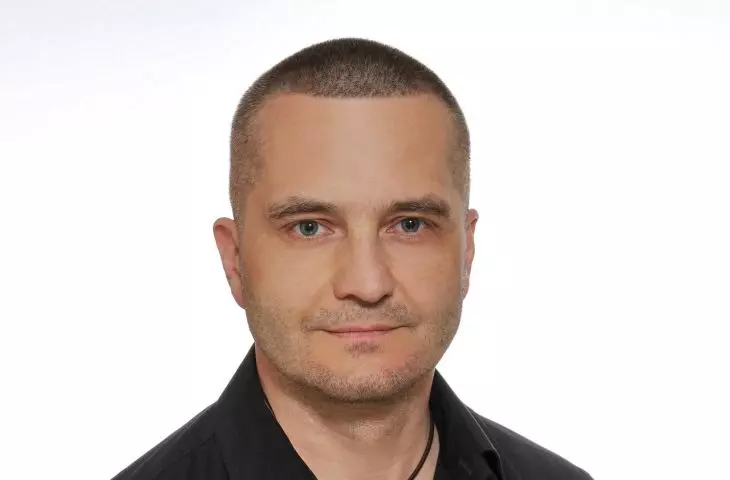The end of December - because that's when we finished preparing the January issue - is the best time for all kinds of summaries. And like every year, we ask practitioners and architecture critics to write what they consider a success and what they consider a failure in a given year. We do it in the convention of Sink or Soar. We give our Authors total freedom of expression and do not moderate this discussion. Rather, we are very curious about it.
Previous episodes of the series featured:
- Oskar Grąbczewski - architect, OvO Grąbczewscy Architekci studio
- Filip Springer - reporter and photographer
- Hubert Wąsek - president of SARP Częstochowa Branch
- Maciej Franta - architect, founder of Franta Group Architects studio
- Marta Sekulska-Wronska - architect and partner at WXCA studio, president of OW SARP
- Tomasz Malkowski - architecture critic
- Małgorzata Kuciewicz and Simone De Iacobis - Centrala Group
- Wojciech Januszczyk - landscape architect and founder of the Landscapes Foundation
- Marek Kaszyński - president of SARP Krakow Branch
- Monika Arczyńska - architect (A2P2)
- Jakub Szczęsny - architect (SZCZ)
- Joanna Erbel - urban activist, housing expert
Piotr Chuchacz in Sink or Soar from A&B 01|2023 issue.
I consider last year's SINK to be the confusion over changes to the building code. The buzz is about a petition drawing attention to the fact that after the changes in the construction law, a group of construction technicians and engineers will be allowed to design, which is supposed to be a threat to the future of the profession and is a taking away of further competencies from the professional group of architects.
The profession of architect, like that of civil engineer, has never been fully regulated. It has been, in a sense, deregulated since the beginning of professional self-government. The Polish state, following the provisions of the Constitution, has transferred by law some of its competencies, including the granting of authority and control over the exercise of professions of public trust, including architects and civil engineers (the profession of urban planner was actually deregulated with the dissolution of the chamber of urban planners), into the hands of professional self-governments. However, it left many entities out of control. We spoke about this during the 6th edition of the thematic conference in Krynica, "Different professions - common goal. The profession of architecture and the profession of civil engineering" in November 2018.
At that time, we discussed and formulated theses for amendments to the Law on Professional Self-Government of Architects and Civil Engineers, I will recall an excerpt from the presentation:
COMPANY vs. PROFESSIONAL
Despite the obligation to exercise control over the practice of the profession imposed on the chambers of professional self-government under Article 17(1) of the Constitution of the Republic of Poland and the Act of December 15, 2000 on professional self-governments of architects and civil engineers, and the actual activity of these self-governments, a significant part of urban planning, architectural and engineering activities is not under their actual jurisdiction. This is because there are entities that are completely beyond the reach of the local self-government bodies responsible for even merely supervising compliance with established ethical principles. Business entities involved in the design and execution of construction works can, thanks to employment turnover, effectively avoid professional responsibility.
This situation undermines confidence not only in professional self-government, but also in the architecture and construction administration of construction supervision and, above all, in the State.
Regulations in the pipeline do not improve the situation either, and the discussed separation of laws or the partial liberation of design and execution activities seems to be of secondary importance in this context.
Four years have passed, and we are again discussing the same thing with baked goods and passion. Chambers of professional self-government bring together professionals, while the design procurement market is primarily made up of business entities. Of course, these are often entities run by architects - in which case the professional self-government actually has a chance to exercise control over their actions. However, a design firm can be set up by anyone and use the employment of authorized persons. Under the jurisdiction of the self-government is then not the company itself, but only its employees. This situation creates a huge field for abuse and unethical behavior in the design procurement market, and we can de facto punish only the victims of this system, and not the perpetrator of possible abuse - the office owner.
An example of pathology is undoubtedly the subcontracting of tasks to subcontractors (for example, industry subcontractors), whose work, by definition, is to be reviewed in search of reasons to reduce or not pay. This may be engineering, but it is financial engineering - which is not what the intent of the project assignment is all about. This is how a dishonest entity lowers the amounts in a tender or bidding competition. There is also the practice of "branding" projects, that is, being, in a sense, a sales representative of specific solutions. This makes it possible already at the design stage, so to speak, by sewing specific solutions into the lining of the project, to significantly reduce the price of the project, since additional income is obtained through sales commissions. The problem, then, is not allowing more professional groups to design, but the lack of control over companies in the market. Engineers or technicians will still be forced to pass the exam that gives them licenses and be under the jurisdiction of the professional self-government. So one can make an effort to make the exam at a high enough level.
We should follow the example of the Pharmacy Professional Self-Government. To open a pharmacy today, more than 50 percent of the shares must be held by a pharmacist. This solution, as it turned out, not only did not limit access to medicines, but made it so that in the case of dangerous or unethical actions, the chamber of the self-government of the public profession, with tools such as a code of professional ethics, an ombudsman for professional responsibility, a disciplinary court, is able to punish the business owner, even depriving him of the opportunity to operate. Only in this way is it possible to effectively enforce the scope of authority that the state has placed in the hands of the professional self-government.
By our Chamber, of course, there are control activities, or attempts to stabilize the design procurement market. Here I will mention the cooperation between the Małopolska Regional Chamber of Architects of the Republic of Poland and the Association of Polish Architects, Krakow Branch. In Cracow, and to a large extent in Malopolska, it has succeeded in bringing about a situation in which the regulatory assumptions of competitions and public tenders are controlled by the Professional Self-Government.
The HIT (with a wink) of the past year is the competition recommended by SARP NR 023/R/2022: "The Ministry of Development and Technology and the General Board of the Association of Polish Architects invite you to participate in a two-stage Competition for the architectural concept of a multi-family residential building with reduced energy consumption. [...] A maximum of five (5) Contest Participants will be selected and, within the framework of the received maximum of five (5) equal Prizes, invited to negotiate a negotiated contract for the development of a Multi-discipline Concept, Architectural and Building Design and Technical Design for multiple use."
What is striking to me about this event is that this competition, as well as the 70-square-meter multiple-use house design competitions organized recently, is the promotion of the absurd thesis that an architect performs a service in the development of documentation. This is an absolute aberration of thinking about our profession, because the task of an architect is not to develop a project or part of it, but to shape space. This is what we are responsible for! This is an extremely serious task - we shape space, and space shapes us. We talked about this very extensively in the panel "Life of Objects, Districts, Cities" during the International Architecture Biennale Krakow 2021 co-organized by the Malopolska Regional Chamber of Architects, the A&B monthly and the Faculty of Architecture at the Krakow University of Technology, led by the SARP Krakow Branch.
The rules of this competition, as well as thinking about a reusable design, remind me of going into the mountains on a difficult trail with a textbook instead of an experienced guide. You can look at a lot of tutorials online and feel well prepared for the challenge. If the weather is good, it can work, but if worse conditions come, it's very likely that you'll face being pulled off the trail by helicopter, if not something worse.
The architect is the guide, guardian and partner of the investor. We do the documentation and then control the implementation of the project in reality. We transform the space - we build its new form, taking full responsibility for it!
If someone promotes the thinking that the competition for the architectural concept of a multi-family multi-use residential building is the answer to the needs of our country, and the needs of the professional community I'd better not mention, they should think carefully about whether they continue to serve the function they do.
The real SOAR is that we are beginning to talk openly about all these issues. The 9th edition of the thematic conference organized by the Malopolska District Chamber of Architects of the Republic of Poland recently concluded in Krynica: "Architecture and Law. Construction project - a case study. Some aspects of conservation protection. Principles of technical knowledge" (Architectura et lex - an absolute HIT!). The event brought together both officials from architectural and construction authorities of the first and second instance, construction supervision, monument protection, as well as, of course, architects and engineers. Each of these professional groups spoke openly about their problems. The presentation was also made by representatives of the Lower Silesian Regional Chamber of Architects of the Republic of Poland, which at the beginning of the year, like the Malopolska Chamber of Architects supported by the National Chamber, issued an interpretation of the amended investment regulations. The different ways of looking at the amendment initially caused an environmental dispute. Meanwhile, as a result of the Krynica meeting and the debates held, we came to the conclusion that the key to agreement is to understand where the differences in the interpretation of the regulations stem from. We discovered that all of us, designers and officials alike, are "riding on the same creaky cart" and are finally talking openly about how to take care of this situation and change it.
There is a whole group of officials who are young in spirit and also often in peso, who make it a priority to issue a decision efficiently, quickly and in such a way that it will hold up in subsequent instances and administrative courts.
Another highlight was the November meeting during Prologue, the Krakow day at the Open Eyes Economy Summit "22, where we jointly tried to find a solution to the problems associated with the Wesoła district in Krakow. The beginning of consolidation, conciliatory thinking of officials, engineers and architects is an absolute hit - a hit you could even say, if this climate continues and the cooperation continues, which I very much hope it will.
At the other extreme, unfortunately, is the KIT of the past year, that is, the topic of deregulation of the profession and another "shootout" between architects and engineers, instead of thinking about how, to bring about actual regulation of these professions. Indeed, the problem I raised, in the first part of my speech, namely the participation in procurement, and not only public procurement, of entities over which there is de facto no control, is common to both professional groups. By the way, this is also, or perhaps above all, a social problem, not to say a national one, affecting one of the largest branches of our country's economy, namely construction.
Piotr Chuchacz
IARP architect, Chairman of the Council of the Małopolska Regional Chamber of Architects of the Republic of Poland, representative of the National Council of the Chamber of Architects of the Republic of Poland














